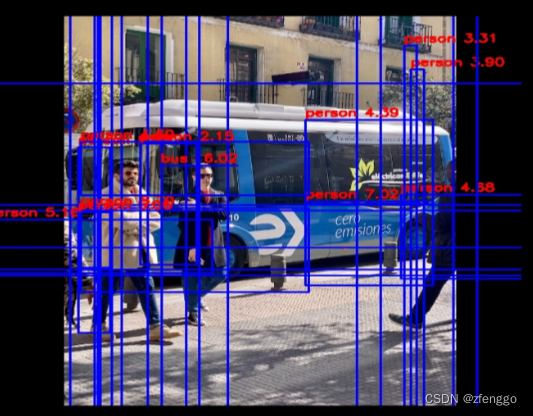模型转换相关
tensflow转onnx
python -m tf2onnx.convert
--graphdef /root/autodl-tmp/warren/text-detection-ctpn/data/ctpn.pb
--output ./model.onnx --inputs Placeholder:0 --outputs Reshape_2:0,rpn_bbox_pred/Reshape_1:0pytorch转onnx
#!/usr/bin/env python3
import torch
from simple_net import SimpleModel
# Load the pretrained model and export it as onnx
model = SimpleModel()
model.eval()
checkpoint = torch.load("weight.pth", map_location="cpu")
model.load_state_dict(checkpoint)
# Prepare input tensor
input = torch.randn(1, 1, 28, 28, requires_grad=True)#batch size-1 input cahnne-1 image size 28*28
# Export the torch model as onnx
torch.onnx.export(model,
input,
'model.onnx', # name of the exported onnx model
opset_version=11,
export_params=True,
do_constant_folding=True)模型所需算力测算
手动测算
网络代码
class SimpleModel(nn.Module):
def __init__(self):
super(SimpleModel, self).__init__()
self.conv1 = nn.Conv2d(1,10,5) #1 input channel 10 outchannel 5 kernel size
self.conv2 = nn.Conv2d(10,20,3) #same as above
self.fc1 = nn.Linear(20*10*10,500) #in / out
self.fc2 = nn.Linear(500,10) #same as above
def forward(self, x):
input_size = x.size(0)
x = self.conv1(x) #in batch*1*28*28 out batch*10*24*24(28-5+1)
x = F.relu(x) #keep shape not change out batch*10*24*24
x = F.max_pool2d(x,2,2) #in batch*10*10*24 out batch*10*12*12(24/2)
x = self.conv2(x) #in batch*10*12*12 out:batch 20*10*10(12-3+1)
x = F.relu(x)
x = x.view(input_size,-1) #flatten -1:caculate dimens autoly 20*10*10
x = self.fc1(x)# in :batch*2000 out batch*500
x = F.relu(x) #keep sahpe not change
x = self.fc2(x) #in 500 out 10
output = F.log_softmax(x,dim=1) #caculate possibility
#print("------------------------------output is ",output)
return output计算过程:
参数量
conv1层:1( input channel) * 10 (output channels) * 5 * 5 (kernel size) + 10 (bias) = 260 个参数
conv2层:10 (input channels )* 20 (output channels )* 3 * 3( kernel size) + 20 (bias)= 1820 个参数
fc1全连接层:20 * 10 * 10 (20个通道,每个通道大小为10*10) * 500 (输出大小) + 500 bias = 1000500 个参数
fc2全连接层:500 (输入大小) * 10 (输出大小) + 10 bias = 5010 个参数
总参数量为:260 + 1820 + 1000500 + 5010 = 1010120 个参数
Macs
1)conv1 层的FLOPs计算:
conv1 层是一个卷积层,输入大小为 batch * 1 * 28 * 28(假设batch大小为B,输入通道数为1,高度为28,宽度为28),输出大小为 batch * 10 * 24 * 24(输出通道数为10,高度为24,宽度为24)。在卷积操作中,每个输出位置需要进行一个 5 * 5 的卷积操作。因此,计算FLOPs的公式为:
其中,B为batch大小为1
FLOPs_conv1 = B * 10 * 24 * 24 * 5 * 5=14400
2)conv2 层的FLOPs计算:
conv2 层也是一个卷积层,输入大小为 batch * 10 * 12 * 12,输出大小为 batch * 20 * 10 * 10。在卷积操作中,每个输出位置需要进行一个 3 * 3 的卷积操作。因此,计算FLOPs的公式为:
FLOPs_conv2 = B * 20 * 10 * 10 * 3 * 3
3)fc1 全连接层的FLOPs计算:
fc1 全连接层将二维的特征图展平为一维向量,并进行全连接操作。输入大小为 batch * (20 * 10 * 10)(即展平后的大小),输出大小为 batch * 500。在全连接操作中,每个输出位置需要进行一个乘法和一个加法操作。因此,计算FLOPs的公式为:
FLOPs_fc1 = B * (20 * 10 * 10) * 500 * 2
4)fc2 全连接层的FLOPs计算:
fc2 全连接层将输出大小从 500 减少到 10。输入大小为 batch * 500,输出大小为 batch * 10。在全连接操作中,每个输出位置需要进行一个乘法和一个加法操作。因此,计算FLOPs的公式为:
FLOPs_fc2 = B * 500 * 10 * 2
5)现在我们将这四层的FLOPs相加得到总体的FLOPs:
总体FLOPs = FLOPs_conv1 + FLOPs_conv2 + FLOPs_fc1 + FLOPs_fc2
总体FLOPs = B * 10 * 24 * 24 * 5 * 5 + B * 20 * 10 * 10 * 3 * 3 + B * (20 * 10 * 10) * 500 * 2 + B * 500 * 10 * 2
由于模型的参数量不依赖于batch大小B,所以FLOPs也不依赖于batch大小B。因此,我们可以直接将batch大小B忽略,得到最终的总体FLOPs:
总体FLOPs = 10 * 24 * 24 * 5 * 5 + 20 * 10 * 10 * 3 * 3 + (20 * 10 * 10) * 500 * 2 + 500 * 10 * 2
总体FLOPs ≈ 149760 + 182000 + 1000000 + 5010 = 1342770 个 FLOPs
6)因此,这个 “SimpleModel” 模型的总体FLOPs为 1342770 个 FLOPs,也就是 1.34 MMac(1.34百万次乘加运算)。
测试代码
'''
Author: warren
Date: 2023-08-01 16:22:02
LastEditors: warren
LastEditTime: 2023-08-01 16:26:45
FilePath: /wzw/MNIST/cal_flops.py
Description:
Copyright (c) 2023 by ${git_name_email}, All Rights Reserved.
'''
#!/usr/bin/env python3
import torchvision.models as models
import torch
from simple_net import SimpleModel
from ptflops import get_model_complexity_info
DEVICE = torch.device("cuda" if torch.cuda.is_available() else "cpu")
with torch.cuda.device(0):
model = SimpleModel().to(DEVICE)
input_data = torch.randn(1, 1, 28, 28)
macs, params = get_model_complexity_info(model, (1, 28, 28), as_strings=True,
print_per_layer_stat=True, verbose=True)
print('{:<30} {:<8}'.format('Computational complexity: ', macs))
print('{:<30} {:<8}'.format('Number of parameters: ', params))结果
SimpleModel(
1.01 M, 100.000% Params, 1.34 MMac, 100.000% MACs,
(conv1): Conv2d(260, 0.026% Params, 149.76 KMac, 11.199% MACs, 1, 10, kernel_size=(5, 5), stride=(1, 1))
(conv2): Conv2d(1.82 k, 0.181% Params, 182.0 KMac, 13.610% MACs, 10, 20, kernel_size=(3, 3), stride=(1, 1))
(fc1): Linear(1.0 M, 99.296% Params, 1.0 MMac, 74.817% MACs, in_features=2000, out_features=500, bias=True)
(fc2): Linear(5.01 k, 0.497% Params, 5.01 KMac, 0.375% MACs, in_features=500, out_features=10, bias=True)
)
Computational complexity: 1.34 MMac
Number of parameters: 1.01 M
参数解释
Params 参数量 Mac乘加运算总数
总参数量:1.01 M(1,010,000个参数),占100.000%。
总浮点运算量(MACs):1.34 MMac(1,340,000次乘加运算),占100.000%。
各层的详细信息:
conv1层:
参数量:0.026%(大约260个参数)
MACs:11.199%(大约149.76 KMac,即149,760次乘加运算)
conv2层:
参数量:0.181%(大约1.82 k个参数)
MACs:13.610%(大约182.0 KMac,即182,000次乘加运算)
fc1全连接层:
参数量:99.296%(大约1.0 M个参数)
MACs:74.817%(大约1.0 MMac,即1,000,000次乘加运算)
fc2全连接层:
参数量:0.497%(大约5.01 k个参数)
MACs:0.375%(大约5.01 KMac,即5,010次乘加运算)
总体计算复杂度:1.34 MMac(1,340,000次乘加运算)。
总参数量:1.01 M(1,010,000个参数)。
原文地址:https://blog.csdn.net/warren103098/article/details/135396233
本文来自互联网用户投稿,该文观点仅代表作者本人,不代表本站立场。本站仅提供信息存储空间服务,不拥有所有权,不承担相关法律责任。
如若转载,请注明出处:http://www.7code.cn/show_55055.html
如若内容造成侵权/违法违规/事实不符,请联系代码007邮箱:suwngjj01@126.com进行投诉反馈,一经查实,立即删除!



![[BUG] cannot import name ‘quantize_qat‘ from ‘onnxruntime.quantization‘](http://www.7code.cn/wp-content/uploads/2023/11/ee6748cbc735e6105405f8a984d954c804b93f34bc916-Z0IqTf_fw1200.png)

